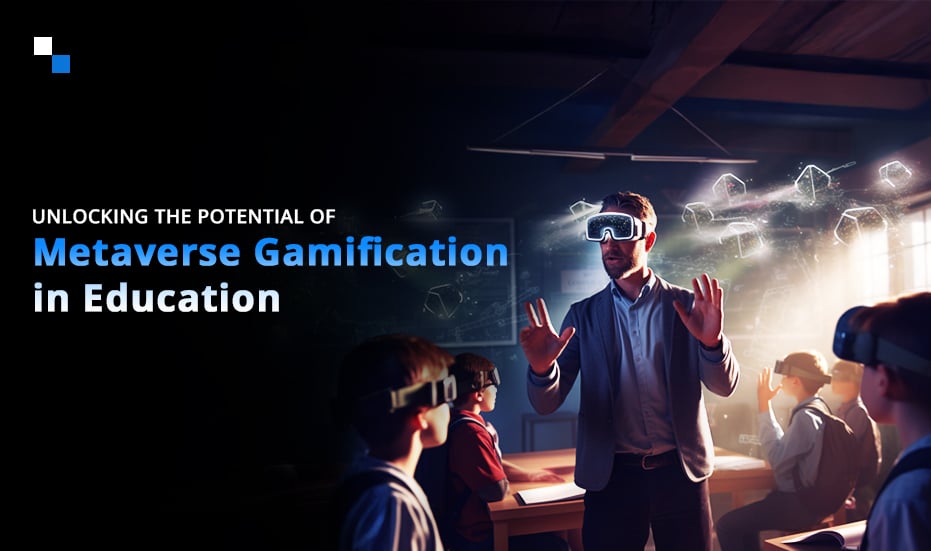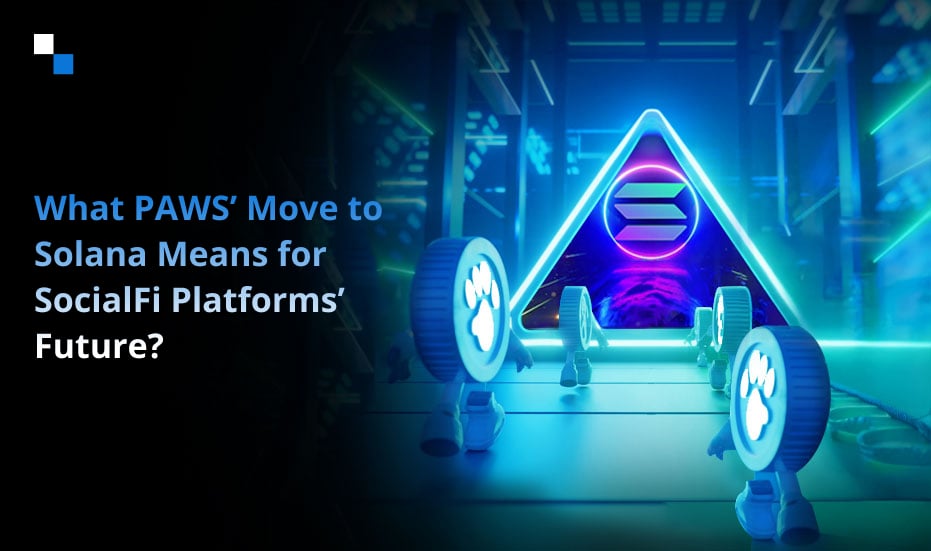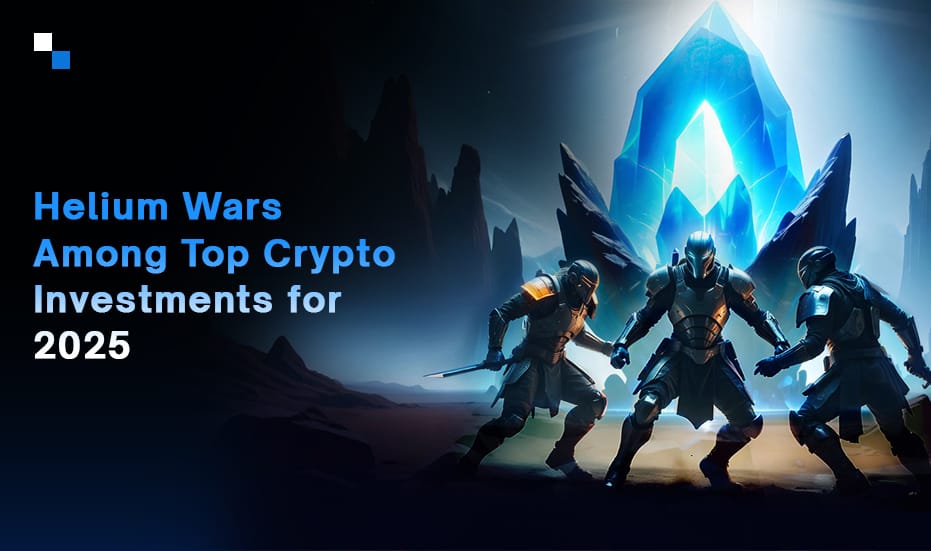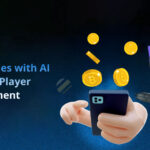
Innovative AI Strategies for T2E Game Development: A Business Guide
February 27, 2025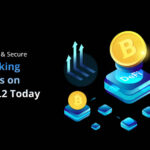
Why Are Enterprises Turning to Bitcoin L2 for DeFi Staking Development?
February 27, 2025Collaborative learning has long been the key to effective education and professional growth. It fosters teamwork, communication, and the exchange of varied opinions, making it an effective instrument for personal and professional development.
But in this era of fast-paced, tech-savvy living, the old ways of collaboration are being reinvented to address the needs of a digitally native generation. Enter gamification and metaverse for education—two revolutionary innovations that are transforming the way we learn and collaborate.
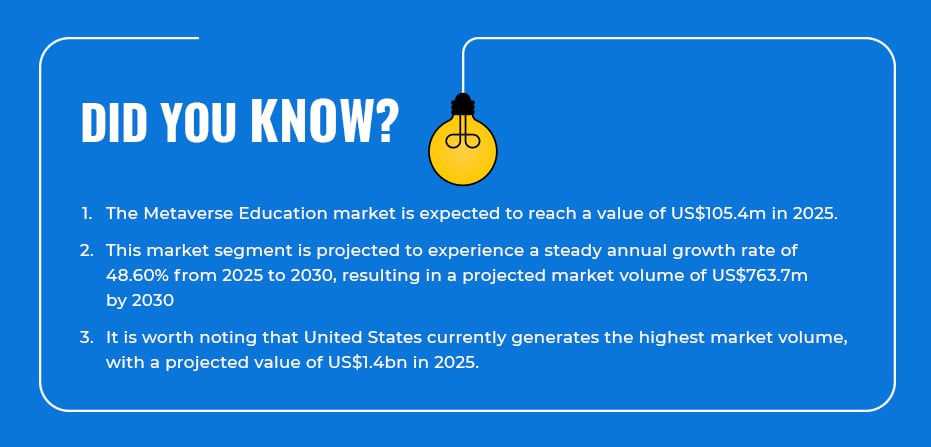
Gamification, the application of game-like features in non-game situations, has already demonstrated its power to increase motivation and engagement. By adding features like points, badges, leaderboards, and challenges, gamification leverages our inherent need for competition, achievement, and reward. Meanwhile, the metaverse platform for education is building immersive, interactive spaces where students can interact and collaborate in ways previously unimaginable.
The metaverse, a virtual, shared space powered by technologies like VR, AR, and blockchain, offers endless possibilities for experiential learning and global collaboration. Together, these technologies are transforming collaborative learning into an engaging, dynamic, and highly effective experience.
In this blog, we’ll explore how gamification and the metaverse for education are reshaping the future of learning, making it more interactive, inclusive, and impactful than ever before.
Understanding Gamification and Metaverse for Education
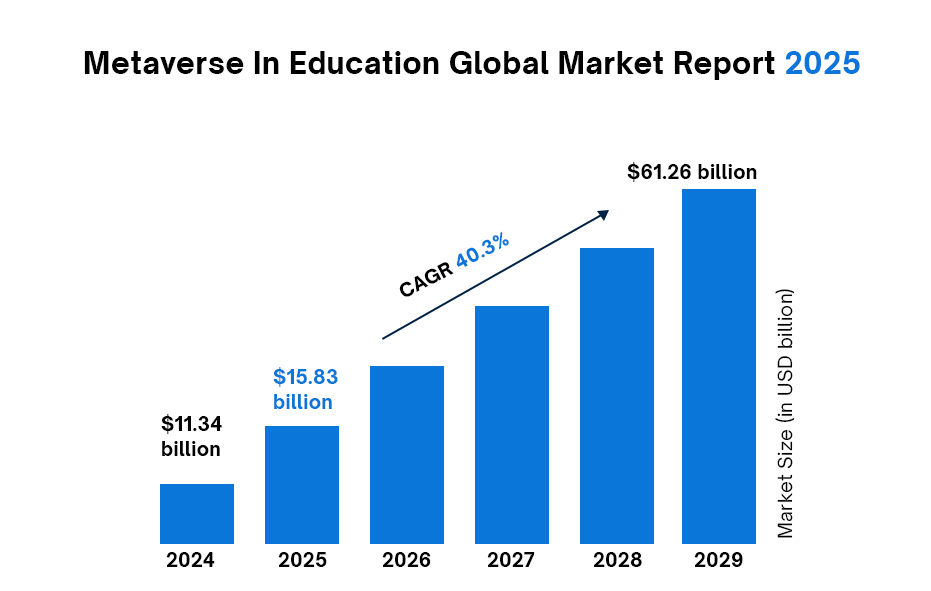
The metaverse in education market size has grown exponentially in recent years. It will grow from $11.34 billion in 2024 to $15.83 billion in 2025 at a compound annual growth rate (CAGR) of 39.7%.
Prior to discussing their influence, it is crucial to grasp these two terms separately and how they relate to one another:
Gamification: It is the use of game mechanics—points, badges, leaderboards, challenges—outside of games in domains such as education and training. It leverages our inherent competition, achievement, and reward motivations to make learning more enjoyable and interesting. Gamification has gained extensive usage in classrooms, corporate training, and even fitness applications, demonstrating its success in increasing motivation and engagement.
Metaverse: The metaverse platform for education is an immersive, interactive, and virtual digital environment through which users can interact with each other and their surroundings in real time. In educational terms, an educational metaverse platform enables a collective virtual environment where students can work together, discover, and solve problems collaboratively.
Picture a classroom where students from various regions of the globe can gather in a virtual setting, perform experiments, or engage in group discussions as if they were physically present in the same room. Together, the metaverse and gamification form a strong synergy: gamification fuels engagement, and the metaverse offers the environment for immersive, collaborative experiences. This metaverse for education synergy is transforming the way we learn, making learning more interactive, inclusive, and effective.
Explore the top 5 use cases of metaverse in education in this blog.
The Role of Gamification in Collaborative Learning
Gamification has already hit education and training, and rightly so. It redefines the process of learning by making it interactive, engaging, and fun. Here’s why it makes collaborative learning better:
- Enhanced Engagement: Reward and challenge-based elements that are characteristic of games engage learners and keep them motivated. By gamifying learning, students will be more interested in remaining engaged and doing things.
- Increased Engagement: Gamification makes even the most reluctant learners want to participate, making it more inclusive. For instance, shy students will be more willing to engage in a gamified quiz than in a normal classroom discussion.
- Immediate Feedback: Real-time feedback enables learners to know their progress and where they need to improve. This real-time reinforcement keeps learners on track and motivated towards their objectives.
- Team Building: Cooperative challenges and games foster teamwork, communication, and problem-solving skills. Whether in a group assignment or team-based competition, gamification motivates learners to work in teams and assist each other.
By making learning interactive and enjoyable, gamification pro9vides the basis for successful collaboration. Metaverse platform for education provides a space where learners are not only encouraged to engage but also willing to collaborate to attain shared objectives.
The Metaverse as a Platform for Collaborative Learning
The education metaverse elevates collaborative learning to an unprecedented level. It offers a virtual environment where students can engage, discover, and collaborate on solving problems in ways hitherto impossible. Here is how the metaverse is revolutionizing collaborative learning:
1. Immersive Learning Spaces
The metaverse platform for education provides immersive learning spaces that mimic real-world settings, making learning more interactive and memorable. These interactive spaces enable students to walk through historical sites, travel to far-off planets, or explore the human body in 3D.
For instance, students studying ancient civilizations can stroll through virtual representations of cities of the past, engaging with artifacts and buildings in a manner that maximizes their comprehension and retention of historical data. Biology students, on the other hand, can walk through elaborate 3D representations of the body, investigating organs and systems in an extremely interactive way. This interactive method assists learners in linking theoretical concepts with real-life experiences, increasing understanding of intricate ideas.
2. International Collaboration
The metaverse for education facilitates international collaboration by bringing learners from across the globe together in real-time. This platform overcomes geographical constraints by enabling learners to collaborate on projects, exchange ideas, and learn from different viewpoints.
For example, students from various nations can work together on a project to create sustainable solutions to environmental issues, exchanging ideas and best practices from their own areas. Such global interaction not only improves teamwork and communication skills but also increases cultural awareness and understanding among students.
3. Personalized Avatars and Environments
Personalization in the metaverse is an effective tool for improving engagement and participation. Students are able to design avatars that represent their identity and personalize their virtual spaces to meet their learning styles. This personalization creates a sense of ownership and attachment to the learning space.
For instance, students are able to create their avatars to represent their personality or culture, and they are able to personalize their virtual classrooms to include tools and resources that assist them in learning better. This degree of personalization makes the students more engaged learners of their own experience, as they feel more at ease and attached to their virtual environment.

4. Simulations and Role-Playing
The metaverse platform for education provides experiential learning through role-playing and simulation exercises. The simulations enable the students to practice skills in a risk-free zone, which is especially beneficial for disciplines such as medicine, engineering, and aviation.
For example, medical students can practice virtual surgeries to perfect their surgical techniques without the risk of injuring actual patients. Likewise, engineering students can prototype, test, and refine design solutions in virtual laboratories using limited or no physical materials, and with less environmental waste. Not only does this improve practical skills but also boosts confidence and readiness for actual challenges.
5. Improved Accessibility and Inclusion
The metaverse for education guarantees that learning experiences are available to all, wherever they are located or whatever their ability. People with disabilities are able to take full part in immersive learning activities that may be difficult or even impossible in other environments.
For instance, learners with mobility impairments are able to visit virtual historical places or go on virtual field trips without encountering physical impediments. Furthermore, learners from distant or underserved regions are able to gain access to quality educational material and engage with other students worldwide, closing gaps in educational equity. This supports a diverse and equitable learning atmosphere, enhancing the learning experience for all involved.
6. Real-Time Feedback and Assessment
The metaverse for education also offers real-time feedback and assessment tools, enabling teachers to track students’ progress more conveniently. This real-time feedback loop allows students to modify their learning approaches and enhance results.
For example, in a simulation, teachers can monitor student performance in real-time and provide immediate feedback on what needs to be improved. This feedback can be incorporated into the learning environment without any difficulty, allowing students to reflect on their learning and make the required changes. Additionally, AI-driven analytics can help identify knowledge gaps and suggest personalized learning paths, further enhancing the effectiveness of educational interventions.
Craft a Metaverse Platform for Education with a Subject Matter Expert
Collaborate with our experts to build a tailored metaverse platform that will redefine collaborative learning. Visualize rich virtual classrooms, dynamic simulations, and gamified environments that engage learners and facilitate memory retention. At Antier, we utilize cutting-edge tech to build rich, accessible educational ecosystems in the metaverse. From concept development to smooth deployment, we deliver end-to-end solutions to match your exact requirements. Enhance the digital reputation of your institution and empower students with the education of the future. Reach out to Antier now and build a robust metaverse platform for education from scratch. Get started today.
